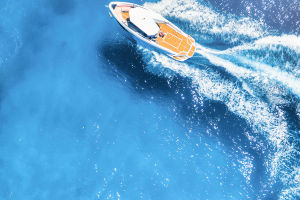On the vast expanse of the ocean, colossal ships resemble giant iron birds, gracefully navigating through tumultuous waves.
These monumental vessels stand as a testament to human ingenuity, seamlessly traversing the seas while facilitating the transportation of vast quantities of goods and people.
They serve as vital conduits, linking ports across the globe and propelling the engine of global trade and commerce. So, what lies at the heart of this remarkable ability of ships to sail upon the sea?
First, to comprehend ship navigation at sea, one must grasp the fundamental principle of water buoyancy. According to Archimedes' principle, when an object is submerged in a fluid, it experiences an upward buoyant force equal to the weight of the displaced fluid, effectively counterbalancing its weight.
Thus, the buoyancy of water is the force that enables ships to float effortlessly upon its surface, owing to their density being less than that of water.
Moreover, the crux of a ship's navigational prowess lies in its propulsion system and hull design. Typically, ships are equipped with propulsion mechanisms such as propellers or water jets.
These power sources generate the necessary thrust to propel the vessel forward, overcoming the resistance posed by the surrounding water. Additionally, meticulous hull design plays a pivotal role in optimizing a ship's performance.
A well-designed hull minimizes water resistance, thereby enhancing the ship's speed and stability, facilitating more efficient navigation across the open seas.
Furthermore, the advancement of navigation technology and equipment is indispensable in ensuring safe and efficient ship navigation. Navigation encompasses a wide array of knowledge and skills, including celestial navigation, cartography, and maritime law.
Crew members must possess proficiency in these areas to safely navigate ships across the seas. Modern vessels are equipped with state-of-the-art navigation instruments such as GPS satellite positioning systems, radar systems, and inertial navigation systems.
These sophisticated tools aid in accurately determining a ship's position and course, ensuring precise navigation along predetermined routes.
Additionally, meteorological and oceanic conditions exert a significant influence on ship navigation. Fluctuations in the marine environment, such as waves, wind patterns, and ocean currents, can impact a ship's speed and stability.
Therefore, crew members must remain vigilant and adapt navigation strategies accordingly to navigate safely through varying conditions.
In conclusion, the ability of ships to navigate the seas encompasses a multitude of factors, including water buoyancy, propulsion systems, hull design, navigation technology, and environmental conditions.
It is the harmonious integration of these elements that enables ships to navigate safely and efficiently across the vast expanses of the ocean, facilitating global trade, transportation, and cultural exchange.
Thus, the mystery of ship navigation on the sea is a testament to human ingenuity, scientific innovation, and our ongoing exploration and utilization of the natural world.


